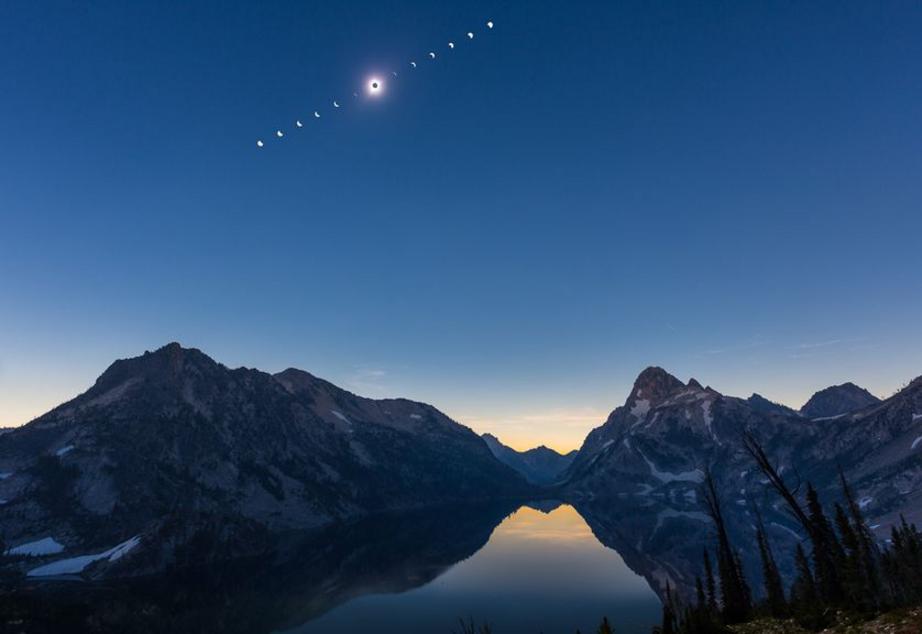Scientists find the perfect 'waves' during August's Great American Eclipse
Study notes ripples in atmosphere as moon's shadow raced over U.S.
An image captured from space by NASA of the moon's shadow on the Earth's surface during August's total solar eclipse. (Photo: NASA)
While an estimated 212 million Americans craned their necks skyward on Aug. 20 to catch the first coast-to-coast solar eclipse in nearly a century, the moon's shadow was busy messing with Earth's upper atmosphere.
Researchers from MIT's Haystack Observatory and Norway's University of Tromsø have published a paper in the journal Geophysical Research Letters detailing the presence of eclipse-generated "waves" in the Earth's ionosphere. The findings confirm a decades-old hypothesis about the impact of the moon's shadow as it races at supersonic speeds across the planet.
“We were looking at some phenomena that were expected but never had the chance to be observed," study author Shun-Rong Zhang from the MIT Haystack Observatory told Gizmodo. "That was the surprise we found ... we had a large coverage and our system is sensitive enough to be able to see these smaller variations. That was really very interesting to us."

August's total solar eclipse generated waves of 'electrons content disturbances' similar to that of the bow of a boat traveling through water. (Photo: Vlad Karpinskiy/Flickr)
While total solar eclipses happen somewhere on Earth every 18 months, the Great American Eclipse of 2017 was notable for both the amount of land it crossed (14 states witnessed totality) and the sensitive technology available to gauge its effects. The long-standing theory was that the moon's shadow would induce rapid cooling in the atmosphere, generating bow waves, and rapid heating as the shadow moved on, creating stern waves.
Using data from more than 2,000 sensors across North America networked into the Global Navigation Satellite System (GNSS), the researchers were able to accurately measure the presence of both bow and stern waves from the eclipse's shadow. According to the paper, the waves moved at over 650 mph and lasted roughly an hour.
You can see a time lapse of the moon's shadow crossing the U.S. as captured by NOAA satellites in the video below.
"This study reveals complex interconnections between the Sun, Moon, and Earth's neutral atmosphere and ionosphere, and demonstrates persistent coupling processes between different components of the Earth's atmosphere, a topic of significant community interest," the researchers wrote.
While the waves were not dangerous, the researchers were nonetheless pleased to prove yet another theory concerning one of nature's most spectacular phenomena.
"Results present the most comprehensive set of eclipse-induced wave characteristics available to date, advance theoretical understanding, and address a long-standing controversy surrounding one of nature's most spectacular active events," they added.
For the rest of this article please go to source link below.
Video can be accessed at source link below.

